Canada’s food scene isn’t all maple syrup and poutine—there’s a weirder, wilder side hiding in plain sight. Some dishes are quirky in the best way, mixing flavors you’d never expect but somehow can’t stop thinking about.
Others… well, they left us questioning everything we thought we knew about comfort food. Here are the strange, surprising, and occasionally shocking Canadian eats that sparked curiosity—and a few that nearly broke us.
1. Poutine
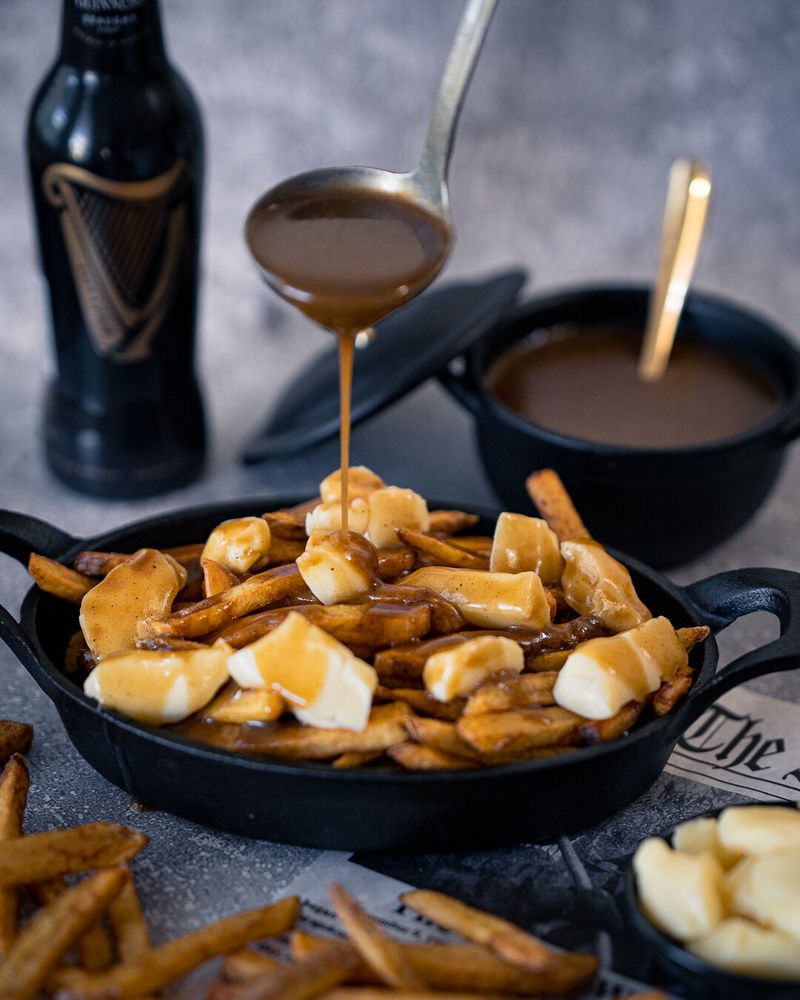
French fries drowning in gravy with cheese curds melting on top sounds like a 2 AM drunk food invention, but Quebecers turned this mess into national treasure status. The magic happens when those cheese curds squeak against your teeth – if they don’t squeak, it’s counterfeit poutine, friend.
Born in rural Quebec during the 1950s, this cardiac catastrophe on a plate has spawned hundreds of variations. Lobster poutine? Exists. Breakfast poutine with eggs? You bet. Thanksgiving poutine with stuffing? Canadians have no limits.
2. Butter Tarts
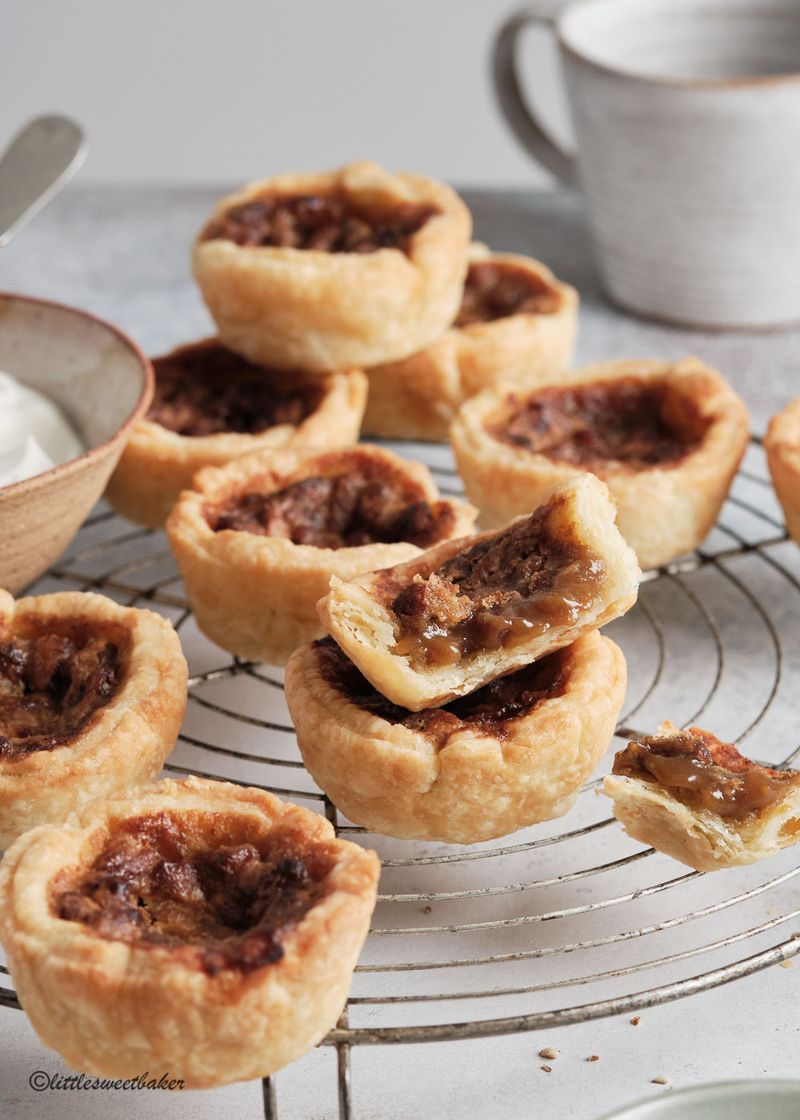
Imagine biting into what looks like an innocent mini pie only to have sweet, buttery filling ooze down your chin in a gloriously sticky avalanche. Butter tarts are Canada’s contribution to dental nightmares – flaky pastry cups filled with a gooey mixture that’s basically butter, sugar, and eggs having a wild party.
The great Canadian debate isn’t about politics but whether these tarts should contain raisins. This question has literally divided families at holiday gatherings.
3. Ketchup Chips
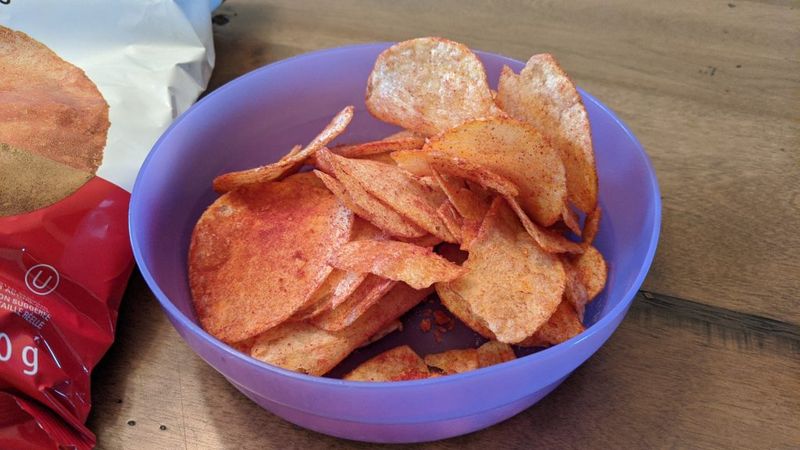
Red alert! Your fingers will look like you’ve committed a crime scene cleanup after diving into a bag of these unnaturally crimson potato crisps. Ketchup chips deliver a sweet-tangy-vinegary punch that’s weirdly addictive despite sounding like something a kindergartener would invent.
Americans crossing the border often smuggle these back like contraband. The bizarre flavor has spawned countless chip-licking techniques to maximize that neon dust coating.
4. Nanaimo Bars
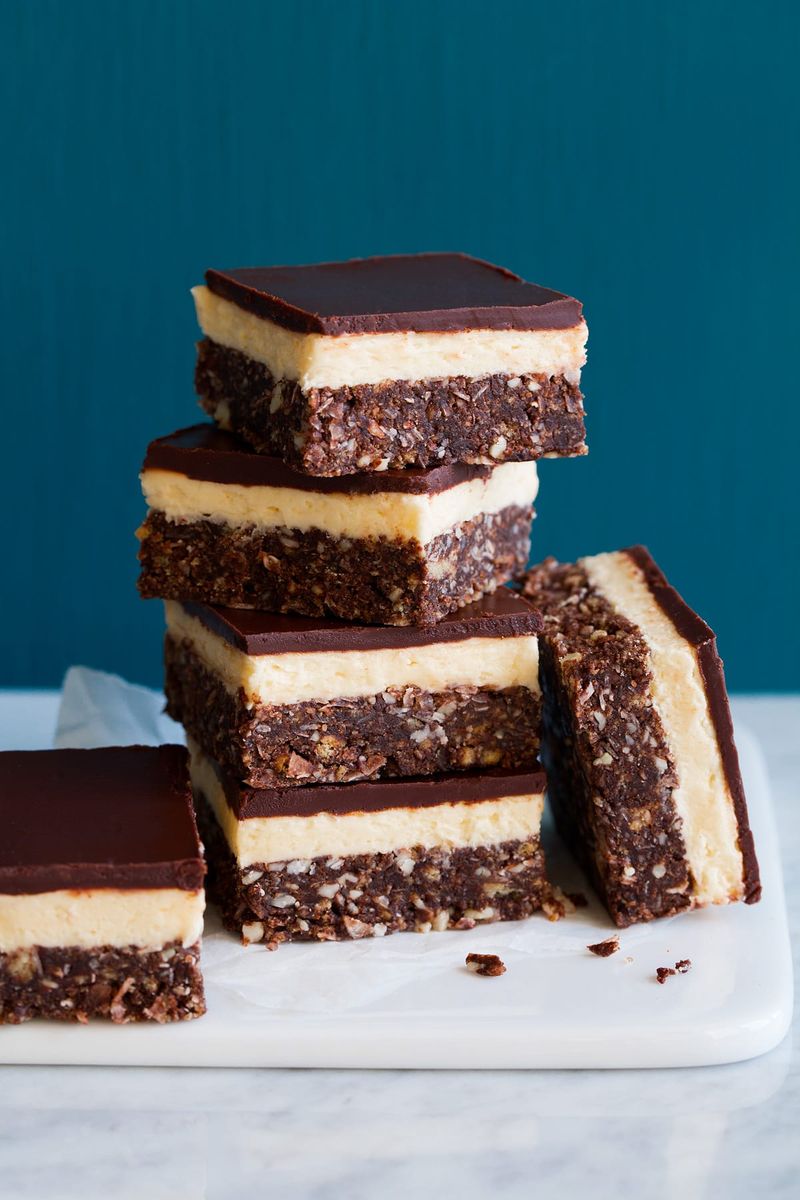
Holy caloric catastrophe! These no-bake wonders from British Columbia feature three distinct layers of sweet insanity: a chocolate-graham-coconut base that could double as delicious concrete, a middle layer of custard-flavored butter icing that defies physics, and a sleek chocolate top layer that cracks satisfyingly when bitten.
Named after the city of Nanaimo on Vancouver Island, these bars require no oven but somehow demand Olympic-level kitchen skills. Mess up the middle layer and you’ve got a sloppy disaster nobody will Instagram.
5. Seal Flipper Pie

Brace yourself for maritime cuisine that doesn’t mess around! Newfoundlanders transformed seal flippers into hearty meat pies that look innocent enough until you learn what’s inside. The meat is dark, gamey, and carries the distinct flavor of the North Atlantic – somewhere between beef and fish with wild undertones.
Harvested during regulated spring hunts, seal meat connects modern Newfoundlanders to their survival-based culinary history. The flippers get boiled, then baked in pastry with onions and root vegetables.
6. Maple Taffy
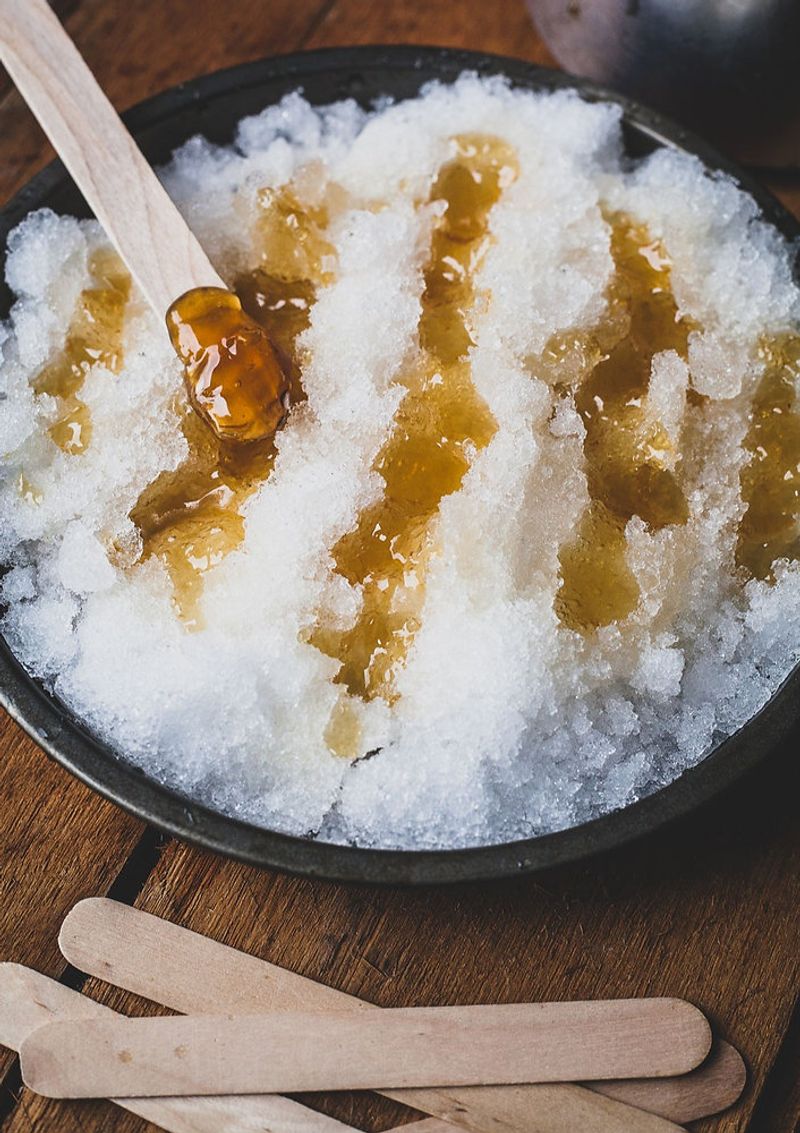
Pouring boiling hot maple syrup onto fresh snow seems like a dare, not dessert preparation. Yet Canadians gleefully drizzle liquid tree sap onto frozen precipitation, wait 30 seconds, then twirl the cooling candy onto wooden sticks like sugar-crazed Vikings.
This treat, called “tire d’érable” in Quebec, transforms pristine white snow into sticky playground of tooth-threatening sweetness. The texture hits that perfect spot between chewy caramel and hard candy, momentarily cementing your jaw shut with maple goodness.
7. Tourtière
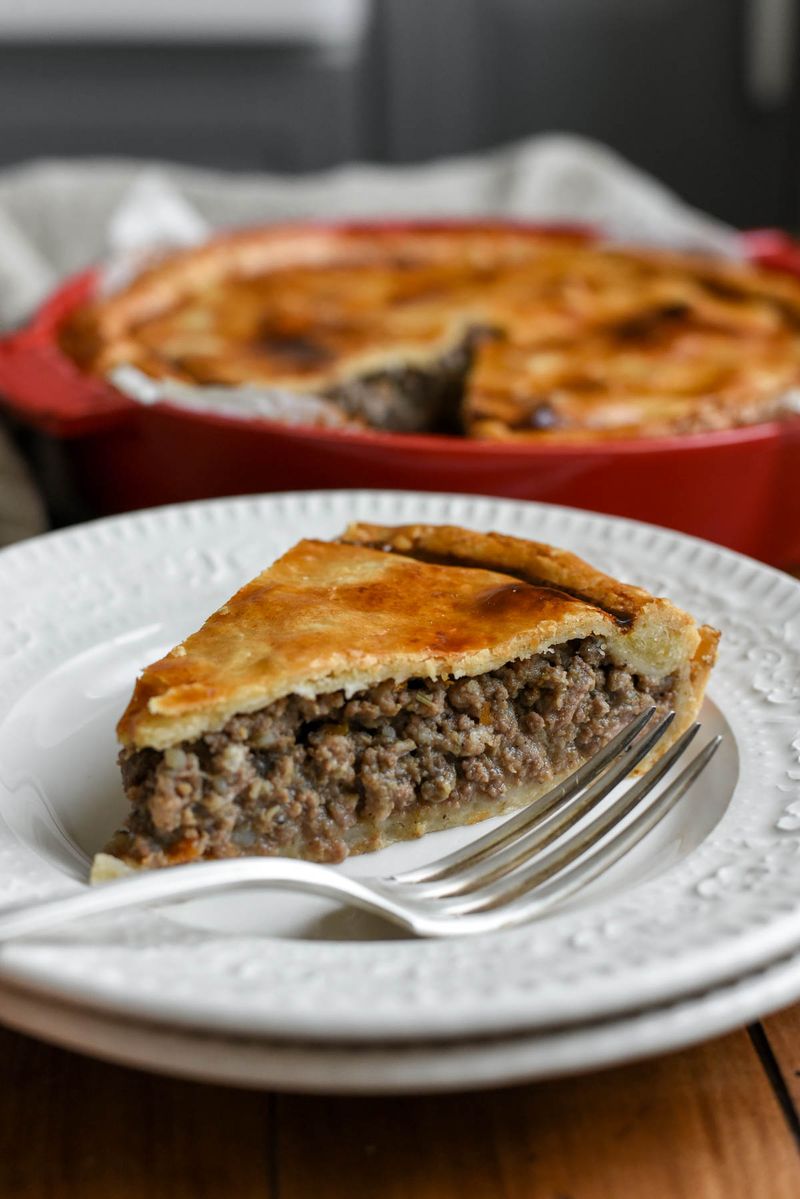
Grandmothers across Quebec guard their tourtière recipes with the intensity of national security protocols. This hearty meat pie combines ground pork, beef, veal, or game meat (surprise!) with potatoes, onions, and a secret blend of spices that varies wildly depending on which region is doing the cooking.
Served traditionally during Christmas and New Year’s celebrations, tourtière provokes passionate debates about proper spice ratios. Cinnamon? Cloves? Allspice? Family feuds have erupted over less.
8. Bannock

Slap flour, water, salt, and baking powder together, then fry that dough into puffy, golden perfection. Bannock might sound simple, but this Indigenous staple carries centuries of cultural significance wrapped in its crispy exterior and fluffy interior.
Originally cooked on sticks over open flames, modern versions get pan-fried, baked, or deep-fried depending on the region and occasion. Versatility is bannock’s superpower – eat it plain, stuff it with berries, slather it with jam, or use it to soak up stew.
9. Montreal Smoked Meat
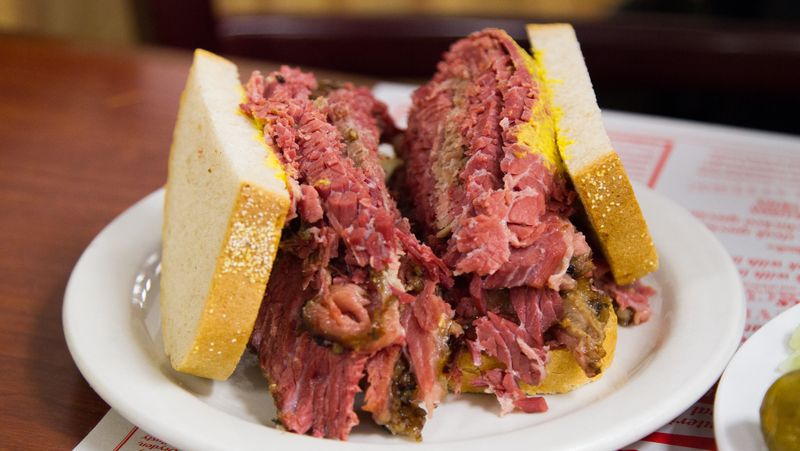
Meat sweats guaranteed! This carnivore’s dream features beef brisket that’s been rubbed with secret spice blends, cured for a week, smoked for hours, then steamed until it practically dissolves on your tongue. Sandwiched between rye bread slices with mustard (and nothing else, you heathen), Montreal smoked meat makes pastrami look like amateur hour.
Historic delis like Schwartz’s have lines wrapping around blocks regardless of Montreal’s infamous winter temperatures. The meat-to-bread ratio should always favor meat by a margin that makes structural integrity questionable.
10. Saskatoon Berry Pie

Blueberries’ wild Canadian cousins pack flavor that’ll make you question your fruit loyalty. Saskatoon berries—not named for the city, but vice versa—deliver an almond-tinged, intensely purple experience that’s been sustaining prairie dwellers since time immemorial.
Indigenous peoples traditionally mixed these berries with bison meat and fat to create pemmican, a vital preservation method. Today’s pies showcase the berries’ unique flavor profile that somehow combines cherry, almond, and blueberry notes in one tiny purple package.
11. Peameal Bacon
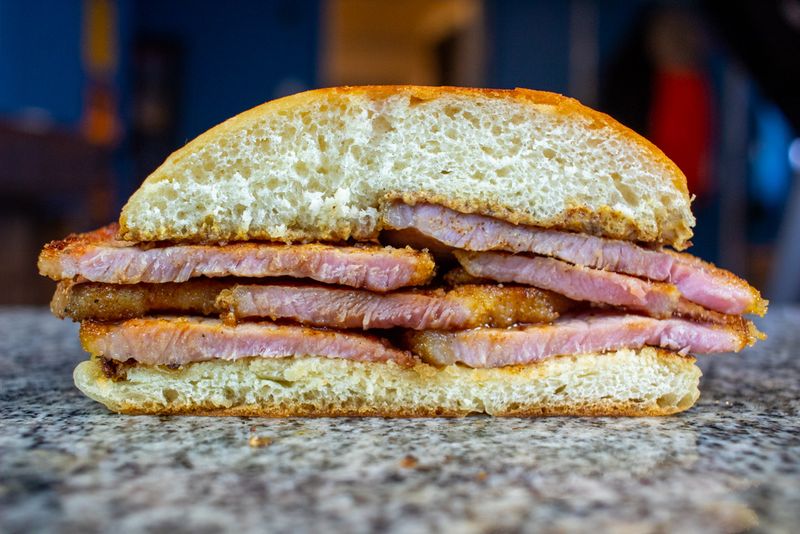
Forget those sad round ham discs Americans call “Canadian bacon” – real Canadian bacon is peameal bacon, and it’s a whole different animal! Well, same animal (pig), but rolled in cornmeal (originally peameal, hence the name) after wet-curing boneless pork loin.
The cornmeal coating creates a crispy exterior when fried while keeping the interior juicy and tender. Toronto’s St. Lawrence Market serves iconic peameal bacon sandwiches that draw crowds willing to wait in lines longer than hockey game bathroom queues.
12. Halifax Donair
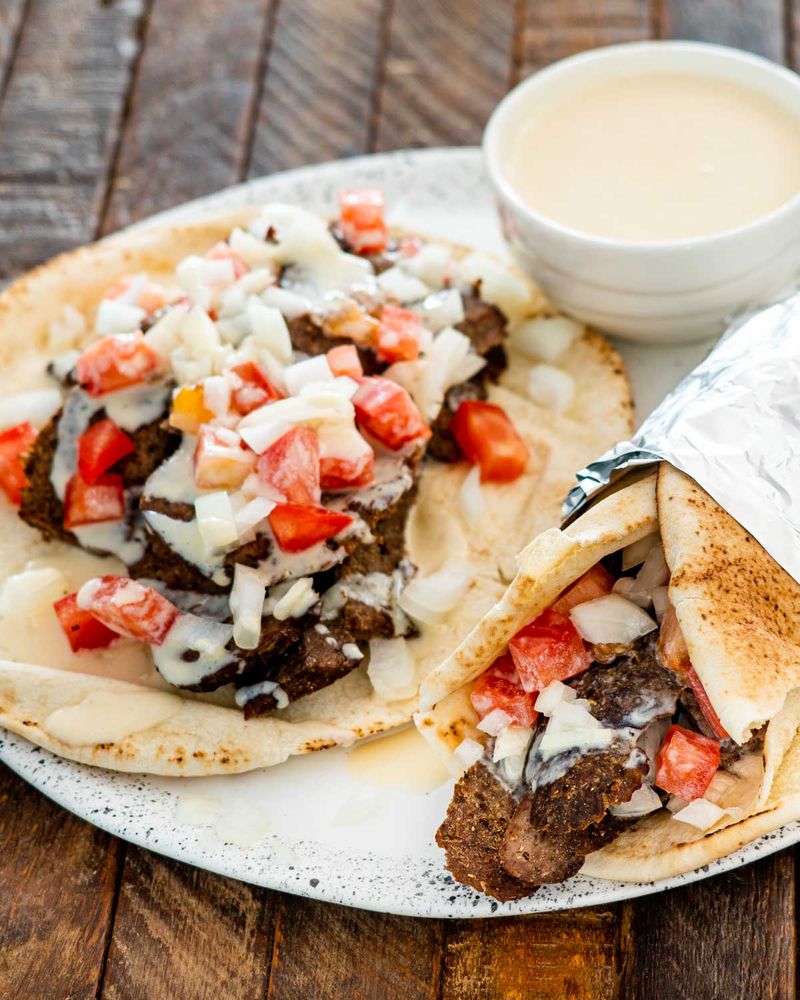
Behold the official food of Halifax! This East Coast masterpiece features spiced ground beef shaped into a giant meat cone, roasted on a vertical spit, then shaved into thin slices that get stuffed into pita bread. But the true magic lies in the sauce – a bizarrely sweet concoction of condensed milk, vinegar, and garlic that sounds horrifying but tastes like drunk heaven.
Created in the 1970s by Greek immigrant Peter Gamoulakos, the donair adapted traditional gyros to Maritime tastes. The sweet sauce replaced traditional tzatziki when Gamoulakos discovered locals preferred sweeter flavors.
13. Caribou

Good lord, this isn’t Rudolph! Caribou is Quebec’s notorious winter alcoholic punch that’ll put hair on your chest and make you think you’re immune to frostbite. The traditional recipe blends red wine, whisky, and maple syrup or sugar into a dangerously smooth concoction that doesn’t taste nearly as strong as it actually is.
Served piping hot at winter festivals, particularly during Quebec Winter Carnival, caribou flows freely while people admire ice sculptures and pretend -30°C is a reasonable temperature for outdoor activities.
14. Rappie Pie
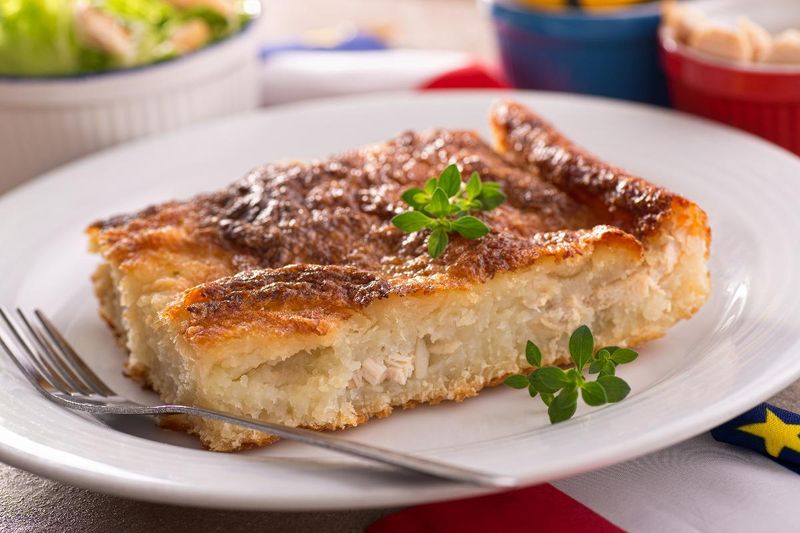
Grated potatoes squeezed until bone dry, then reconstituted with hot broth until they form a starchy slurry that’s layered with meat? Welcome to rappie pie, an Acadian creation that looks suspiciously like cement in its early stages but transforms into comfort food magic.
The name comes from “râpé,” French for grated, referring to the labor-intensive process of preparing the potatoes. Traditionally, Acadian families would gather for rappie pie making sessions, turning hard work into social events.
15. Flipper Jam
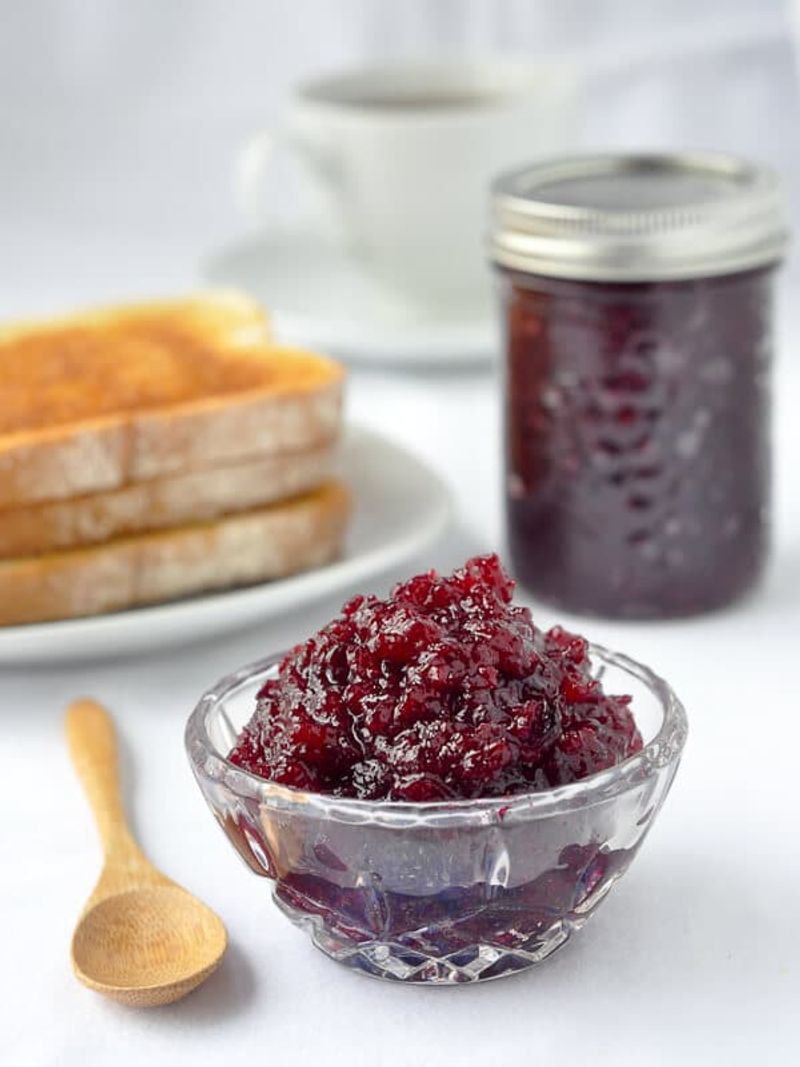
Don’t panic—no seal flippers in this jam! Newfoundlanders nicknamed partridgeberries “flipper berries” because they were traditionally served alongside seal flipper dishes. This tart, ruby-red preserve combines these berries with apples for a spread that’ll wake up your taste buds faster than a polar bear dip.
Gathered in the fall after the first frost, partridgeberries contain natural pectin that creates perfect jam consistency without additives. The distinctively tart flavor pairs brilliantly with game meats, breakfast pastries, or simply slathered on homemade bread.
16. Caesar Cocktail
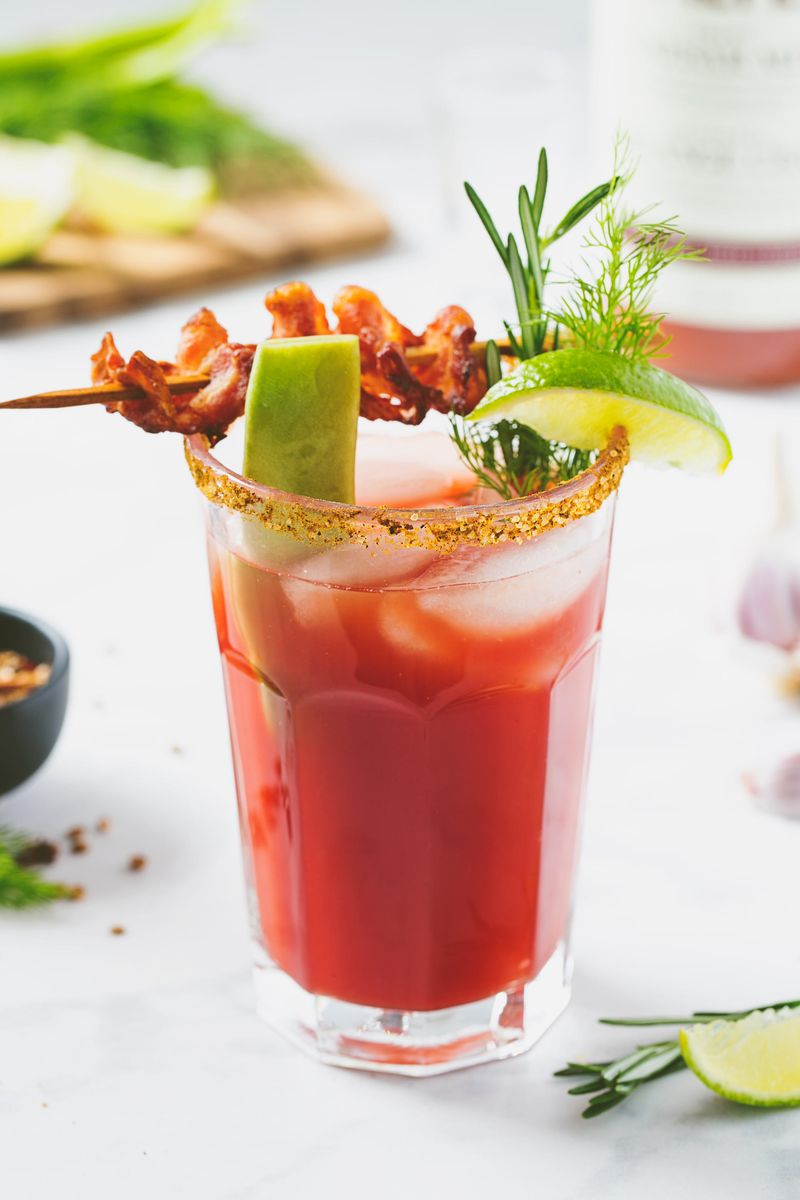
Vodka, hot sauce, Worcestershire sauce, and… clam juice? Canada’s national cocktail sounds like a dare gone wrong but somehow works magical hangover-curing wonders. Created in 1969 by restaurant manager Walter Chell in Calgary, this savory drink makes American Bloody Marys seem boring by comparison.
The rim must be coated with celery salt – this is non-negotiable. Garnishes have evolved from simple celery stalks to full-blown meals balancing atop glasses, including bacon, sliders, pickled vegetables, and even entire fried chickens in extreme cases.
17. Split Pea Soup
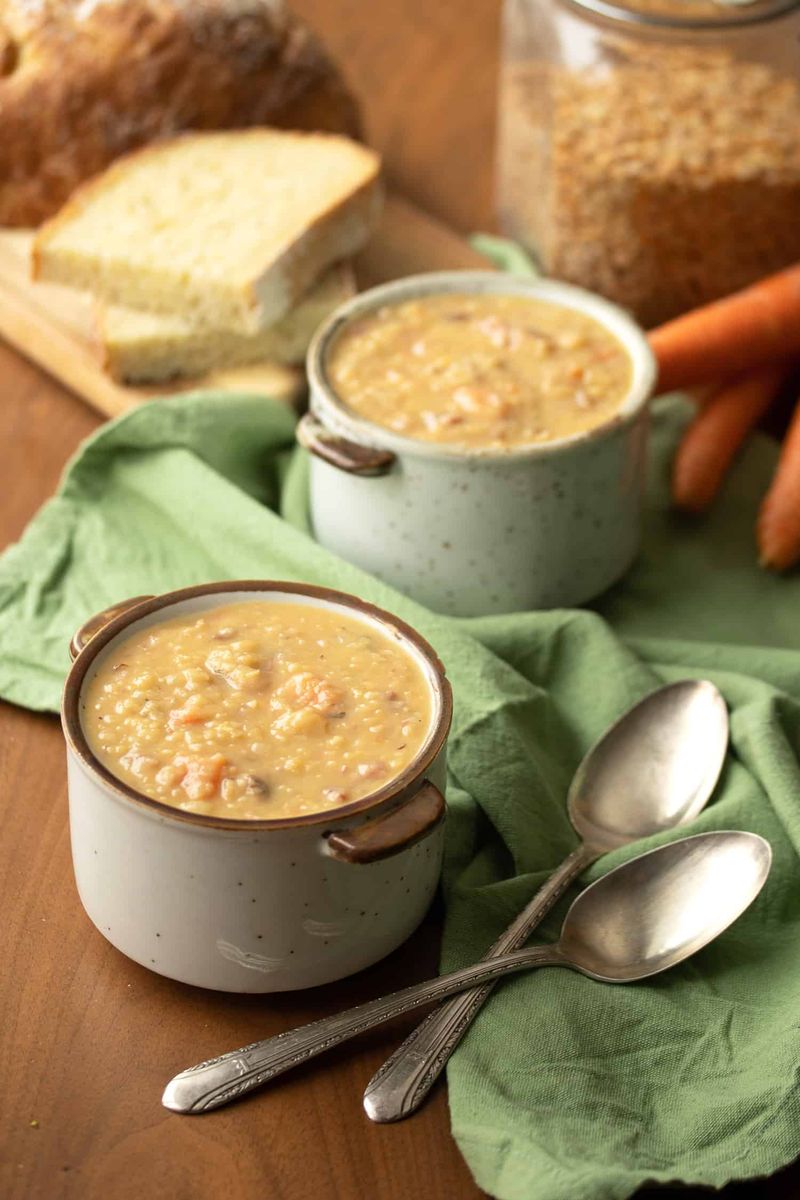
Yellow split peas swimming in a thick broth with chunks of salt pork and herbs might not win beauty contests, but this French-Canadian staple has sustained lumberjacks and farmers through brutal winters for centuries. Traditional preparation requires simmering for hours until the peas practically disintegrate into a hearty potage.
The iconic Habitant brand canned version introduced countless Canadians to this humble dish, complete with its memorable label featuring old-timey farmers. Proper texture should be thick enough that a wooden spoon stands upright – anything less is considered soup heresy.
18. Pouding Chômeur
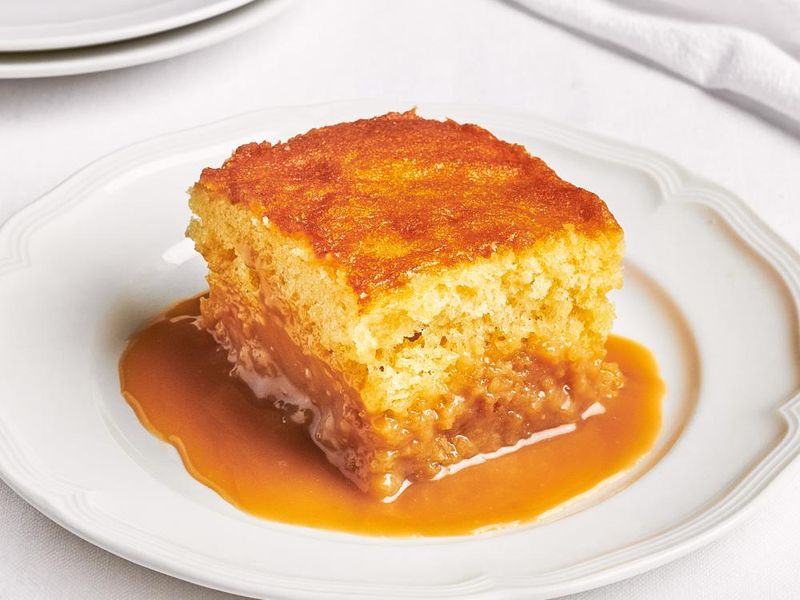
Created during the Great Depression by resourceful French-Canadian women, “poor man’s pudding” proves economic hardship breeds culinary genius. This backwards cake features simple batter topped with hot maple syrup or brown sugar syrup before baking, which magically switches places during cooking to create a warm cake floating in pudding.
The name literally translates to “unemployed man’s pudding,” reflecting its origins as an affordable dessert during tough economic times. Despite its humble beginnings, modern versions appear on upscale restaurant menus across Quebec.

